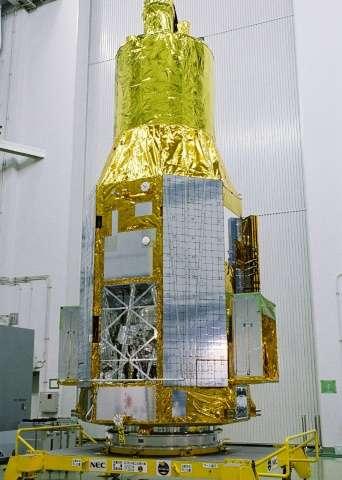Software bug worth 273 million dollars
 Bashny.Net
Bashny.Net

ray space telescope ASTRO-H (Hitomi), was launched into space 17 February 2016. March 26 the device was lost. According to the official version of the reasons of failure of the satellite is to separate the solar panels on the machine, which had to provide expensive equipment energy. Cost of the project, including the satellite and its launch, amounted to about 31 billion yen ($ 273 million dollars). Published version of events that led to the destruction of the satellite.
March 26 spacecraft completed the maneuver in preparation for the observation of the quasar Markarian 205. Attitude Control System (ACS) began using data Star Tracking system (STT) to control the position of the satellite. At the same time, another Positioning System Inertial Reference Unit (IRU) should update the data for STT. That probably will not happen.

At this point, the machine passed the Brazilian magnetic anomaly, and as is the case with the Phobos-Grunt, elevated levels of radiation onboard electronics disrupted, and the absence in this region due to the terrestrial services are not allowed to intervene in the spacecraft control system.
STT systems and IRU have different data about the satellite altitude. In this case, the IRU has priority, but data were wrong - system assumed that the device is rotated at a speed of 20 degrees per hour, which actually was not. The spacecraft was trying to stop a nonexistent rotation by the flywheel inertial guidance system. But earlier it was made a fatal mistake - in the satellite configuration error, and the work of the inertial guidance system was introduced only created a growing satellite rotation.
Reaching the emergency values system went into emergency mode "Safe Hold" and tried to stop the rotation of the motor orientation. But again, this same software error, rather than stopping the rotation, even more accelerated rotation. Strong rotation caused stress and deformation exceeding estimates, which caused the destruction of the spacecraft with a margin of solar panels.
Source: geektimes.ru/post/275180/
Tags
See also
Hairstyle, costing one million dollars
In California, found a treasure for 10 million dollars
Accommodation in New York cost $ 115 million
Can we forget about the million dollars?
Cake for $ 75 million
Japan recognized Hitomi companion lost forever
7 biggest failures associated with the space launch
Spider halted most construction cost of $ 15 million
$ 500 million from the bottom of the Atlantic
How to make a million dollars per year















